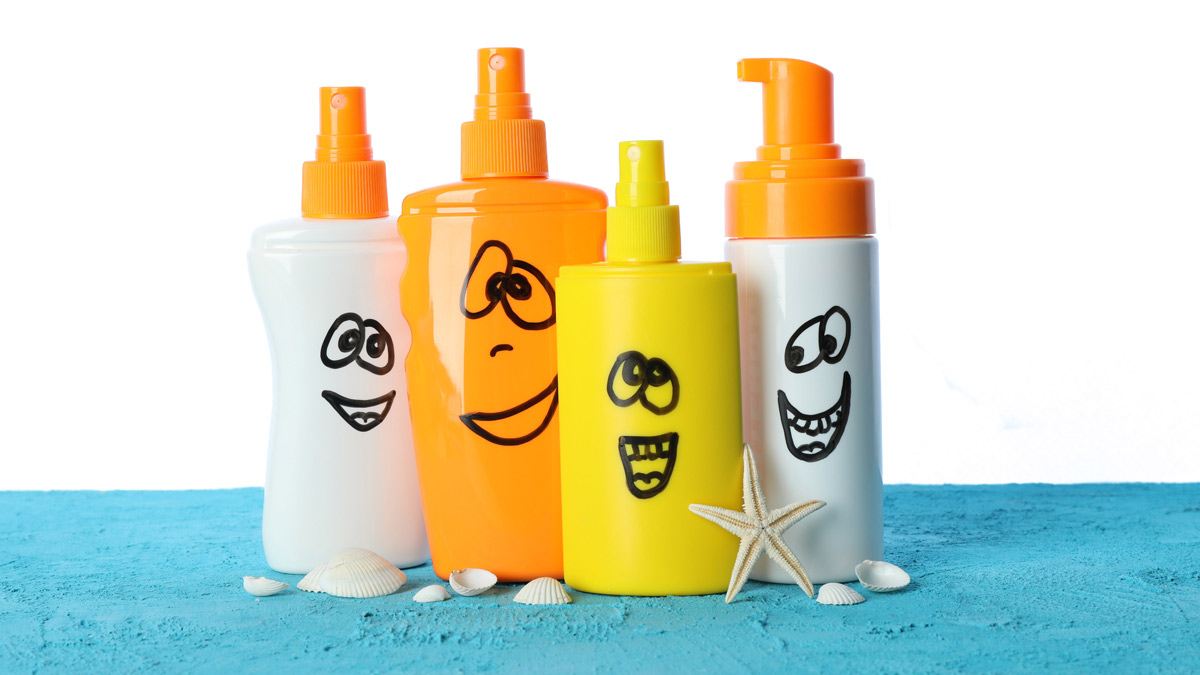It’s summertime and, rightly so, a top medical concern is sunburn. As you walk into any grocery store or pharmacy, you are met with large displays of sunscreen and aloe vera gel. Which SPF is best? Is it water-proof, hypoallergenic or dermatologist approved? Should you get the spray or lotion? What do all the ingredients even mean?
For average people who want to keep their skin healthy in the summer months, picking out a sunscreen can be downright daunting.
Dr. Marta Hampton, a West Ashley dermatologist and secretary-treasurer of the Charleston County Medical Society, said that in order to pick out the right sunscreen, you need to have a basic understanding of what sunscreen really is.
She broke it down first by talking about the two types of sunscreen out there: physical (non-chemical) and chemical.
Physical sunscreens, she explained, are characterized by two very important ingredients that do the “screening”: zinc oxide and titanium dioxide.
“Some sunscreens will have one but not the other. It is the zinc oxide that best blocks the sun and creates that barrier,” she pointed out.
She said that it is best to find a sunscreen that has both of those ingredients, but that zinc oxide (in the 5% to 10% range) is more important than titanium dioxide.
The higher the percentage of zinc (greater than 20%), the heavier the cream and the better the barrier will be.
“The only drawback to zinc oxide is that it typically is heavy and gives people that white paste look,” she admitted. “But it is what is creating that physical barrier and that is why it is heavy. Luckily, you can find tinted zinc sunscreens if the white paste look bothers you.”
She said zinc oxide and titanium dioxide together are waterproof and that one application in the morning usually means you are good for the day until it has been rubbed off.
And, when it comes to the different types of rays and how damaging they are to the skin, it is zinc oxide that blocks both UVB and UVA rays.
UVB cannot penetrate beyond the superficial skin layers and is responsible for delayed tanning and burning with blister formation. It is also what is believed to be most responsible for enhanced skin aging and promoting the development of skin cancer.
UVA penetrates deeper and is responsible for the immediate tanning effect. It also contributes to skin cancer and aging but is less intense than UVB.
Chemical sunscreens don’t provide the best barrier and have to be re-applied at least every four hours or after getting wet. They have all sorts of ingredients in them but do not contain the “screen” of zinc oxide or titanium dioxide.
“The main difference with these is that it is like having nothing on after four hours,” she said. “And they are not as heavy.”
She also said that not all chemical sunscreens will block both UVA and UVB rays; most just block UVB rays. You need the chemical avobenzone to block UVA rays in a sunscreen.
Her advice on the level of “sun protecting factor” is to have at least a 30.
“There isn’t much difference between 30 and 50,” she said.
In her opinion, there is no reason to buy a certain sunscreen because it says “dermatologist tested” or “hypoallergenic.”
“You don’t know what that is based on, so I would ignore that commercial advertising,” she said.
Mainly, according to Dr. Hampton, a consumer should be most concerned with the sunscreen containing zinc oxide, titanium dioxide (ideally both, but definitely zinc oxide) and having an SPF of at least 30.
“The name brand doesn’t really matter. If you are pink at the end of the day, your sunscreen isn’t working,” she said, warning that being pink is a sign of sun damage to the skin and that blistering is how people get skin cancer.
“People need to focus on putting sunscreen on their whole body, everything that will be exposed to the sun, but especially places that you may not think to cover, like the ears and neck,” she said. “People will come in with a splotchy neck and their face looks fine, and it is because they never put sunscreen on their neck. I also see skin cancer on the ears a lot.”
If sunscreen is not readily available, she recommended dark rather than light-colored clothes to cover the skin.
“If you get a sunburn, it is important to reduce inflammation, just like you would any other burn. Ibuprofen and topical steroids can be used for this. She said that aloe actually can cause an allergic reaction for some people, especially if it is applied to skin that is broken down.
“All skin cancers are derived from sun damage,” she warned. “It is so important to protect yourself from sunburn. Being out in the sun with sunscreen on is healthy for you. Remember, the sun does provide vitamin D, but just be smart about it. You never want to get too much.”
Oral Sunscreen
Heliocare®, a new oral sunscreen derived from a fern plant native to Central and South America, increases the amount of antioxidants in the bloodstream. Dr. Hampton said she recommends this to people who have or who had skin cancer. It chemically keeps the skin from suffering damage from the sun. She warned that it is not a replacement for sunscreen but can be used in combination with it.
Misconceptions About Skin Damage from the Sun by Dr. Marta Hampton:
1) People who have dark skin don’t need sunscreen.
“Not true. You may have a built-in sunscreen because you aren’t as fair as someone else, but that doesn’t mean you can’t still get sun damage. You just might not need zinc oxide and could probably get away with the chemical sunscreens and not as high of an SPF.”
2) If you don’t lie out in the sun, you won’t get sunburn.
“There is getting sun directly and getting sun indirectly like in your car,” she explained. “Both are damaging. Unless you have all windows tinted, you are getting sun damage in the car.”
3) You can’t get sunburn before 9 a.m. and after 4 p.m.
“There are damaging rays for as long as the sun is shining. Maybe the rays are less intense than at 12 p.m., but they are still there and you still need to protect yourself.”
4) You can’t get sun damage in the winter.
“It is sad that you don’t see sunscreen sold in stores as much in the winter or you have to really search for it,” she said. “Sun damage is year-round.”
5) You don’t have to rub in the spray sunscreens.
“You need to rub the spray sunscreen into the skin. That way it is no different than using a sunscreen lotion or cream.”
By Theresa Stratford







